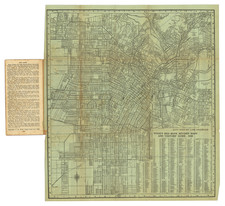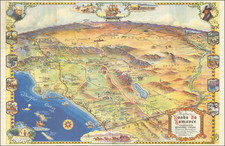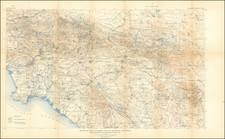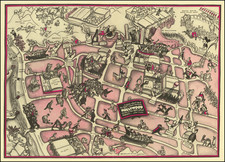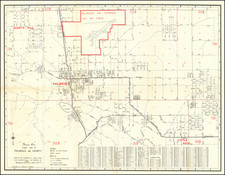An Early Plan of Los Angeles Harbor
Rare early map of the Harbor of Los Angeles, published by the Clason Map Company in 1921.
The map provides an early picture of the port and supporting infrastructure, just 9 years after the completion of the first jmajor wharf.
A second schematic map illustrate the growth of Los Angeles over time, including the recent additions of:
- San Fernando Valley (May 22, 1915)
- Westgate (June 14, 1916)
- Palms (May 22, 1915)
- La Brea (February 1922)
- Manchester (February 1922)
- West Adams (February 13, 1918)
- West Coast (June 15, 1917)
A number of the older additions are also shown and dated.
Includes a large map of Greater Los Angeles on the verso.
Port of Los Angeles
In 1542, Juan Rodriquez Cabrillo discovered the so called "Bay of Smokes." The south-facing San Pedro Bay was originally a shallow mudflat, too soft to support a wharf. Visiting ships had two choices: stay far out at anchor and have their goods and passengers ferried to shore, or beach themselves. Phineas Banning greatly improved shipping when he dredged the channel to Wilmington in 1871 to a depth of 10 feet. The port handled 50,000 tons of shipping that year.
The Southern Pacific Railroad and Collis P. Huntington wanted to create Port Los Angeles at Santa Monica and built the Long Wharf there in 1893. However, the Los Angeles Times publisher Harrison Gray Otis and U.S. Senator Stephen White pushed for federal support of the Port of Los Angeles at San Pedro Bay. The Free Harbor Fight was settled when San Pedro was endorsed in 1897 by a commission headed by Rear Admiral John C. Walker. With U.S. government support, breakwater construction began in 1899, and the area was annexed to Los Angeles in 1909. The Los Angeles Board of Harbor Commissioners was founded in 1907.
In 1912 the Southern Pacific Railroad completed its first major wharf at the port. By the 1920s, the port of Los Angeles surpassed San Francisco as the West Coast's busiest seaport.











![[ Jefferson Park ] West Adams Park Place on West Adams Heights An Ideal Home Site](https://storage.googleapis.com/raremaps/img/small/97752.jpg)
